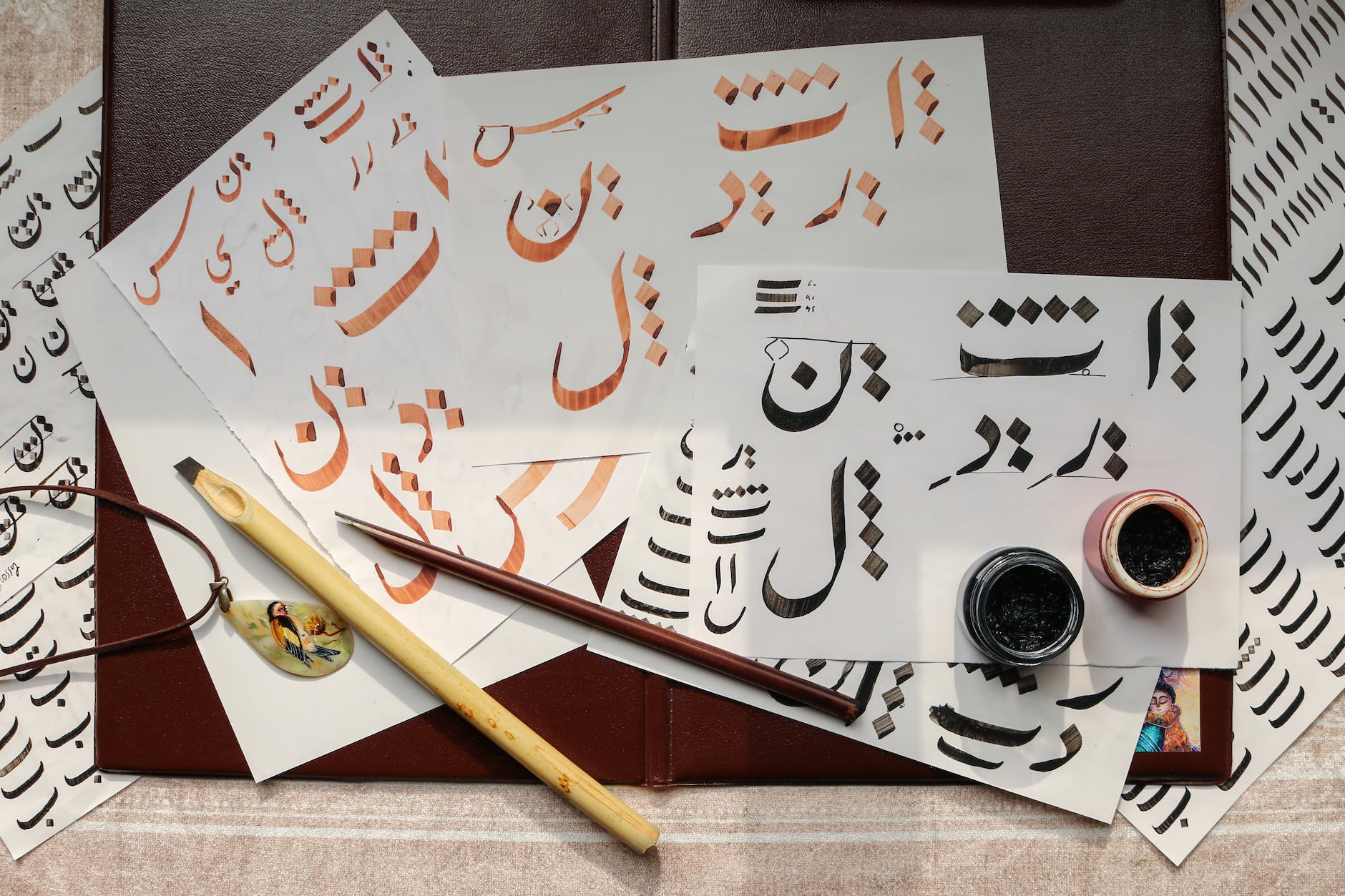exploring different calligraphy styles: from traditional to modern
Calligraphy is an art form that involves the decorative lettering or writing of a particular language. It has a long and rich history, with roots that can be traced back to ancient civilizations. Understanding the art of calligraphy requires an appreciation for the intricacies of letterforms, strokes, and the different calligraphy styles that have evolved over time.
What is calligraphy and its history?
Understanding the art of calligraphy
Calligraphy is more than just writing; it’s an art form. Each stroke and letter is carefully crafted to create a visually appealing and aesthetically pleasing piece of work. Calligraphy is often associated with elegance, precision, and beauty.
Exploring the origins of calligraphy
The origins of calligraphy can be traced back to ancient civilizations such as Mesopotamia, Egypt, and China. These early civilizations developed writing systems that became the basis for calligraphy. Calligraphy played a significant role in religious scriptures, official documents, and artistic expression.
The evolution of calligraphy throughout history
Calligraphy has evolved over time, adapting to various cultures, languages, and artistic movements. From the classical calligraphy styles of copperplate and Spencerian to the more contemporary brush lettering and bounce lettering, there’s always something new and exciting to explore in the world of calligraphy.
What are the different calligraphy styles?
Traditional calligraphy styles: Exploring Copperplate and Spencerian
Traditional calligraphy styles such as Copperplate and Spencerian are known for their refined and elegant letterforms. Copperplate calligraphy is characterized by its thin upstrokes and thick downstrokes, creating a harmonious contrast. Spencerian calligraphy, on the other hand, is known for its flowing and graceful script.
Modern calligraphy styles: Brush lettering and bounce lettering
In contrast to traditional calligraphy, modern calligraphy styles have emerged, offering a more playful and experimental approach. Brush lettering involves the use of a brush pen to create thick and thin strokes, allowing for more expressive lettering. Bounce lettering, on the other hand, is characterized by its dynamic and energetic style.
Learning the rules of traditional calligraphy
Before diving into the world of calligraphy, it’s essential to learn the rules of traditional calligraphy. Understanding the proper stroke order, letterforms, and spacing is crucial in mastering this art form. By following these rules, you can create visually appealing and consistent lettering.
How to get started with calligraphy?
Building a strong foundation: Learning the basic strokes
Building a strong foundation in calligraphy starts with learning the basic strokes. These fundamental strokes include upward strokes, downward strokes, and diagonal strokes. By practicing these basic strokes, you can develop better control and precision in your lettering.
Choosing the right writing instrument for calligraphy
The choice of writing instrument is crucial in calligraphy. Different pens and brushes produce different line variations, thicknesses, and textures. Experimenting with different nibs, brush pens, and inks will allow you to find the tools that suit your personal style and preferences.
Getting started with a calligraphy worksheet
A calligraphy worksheet can be a helpful tool for beginners. It provides guidance on stroke order, letterforms, and practice space. By following a worksheet, you can gradually develop your skills and build muscle memory.
What are the key techniques in calligraphy?
Mastering the art of letterforms and alphabets
Mastering letterforms and alphabets is a crucial aspect of calligraphy. Understanding the anatomy of each letter and practicing their construction will help you create consistent and visually appealing lettering.
Creating beautiful flourishes in calligraphy
Flourishes add a decorative touch to calligraphy. These elaborate strokes and embellishments can be used to enhance the overall composition and visual impact of your lettering. Practicing different flourishes will allow you to develop your own signature style.
Exploring different ink and pen combinations in calligraphy
The choice of ink and pen combinations can significantly influence the outcome of your calligraphy. Experimenting with different inks, papers, and pens will give you a better understanding of how different combinations affect the texture, flow, and overall appearance of your lettering.
Where to learn calligraphy?
Joining calligraphy workshops and classes
Joining calligraphy workshops and classes can provide you with valuable guidance and feedback from experienced calligraphers. These learning environments allow you to interact with fellow enthusiasts and gain inspiration from the work of others.
Learning calligraphy online: Resources and tutorials
Learning calligraphy online has become increasingly popular, thanks to the abundance of resources and tutorials available on the internet. Websites, video tutorials, and online communities offer a wealth of information and inspiration for aspiring calligraphers.
Practicing calligraphy: Tips for beginners
Consistent practice is the key to improving your calligraphy skills. Set aside dedicated time for practice, and focus on specific areas that you want to improve. Additionally, seeking feedback from other calligraphers can help you identify areas for growth and improvement.
